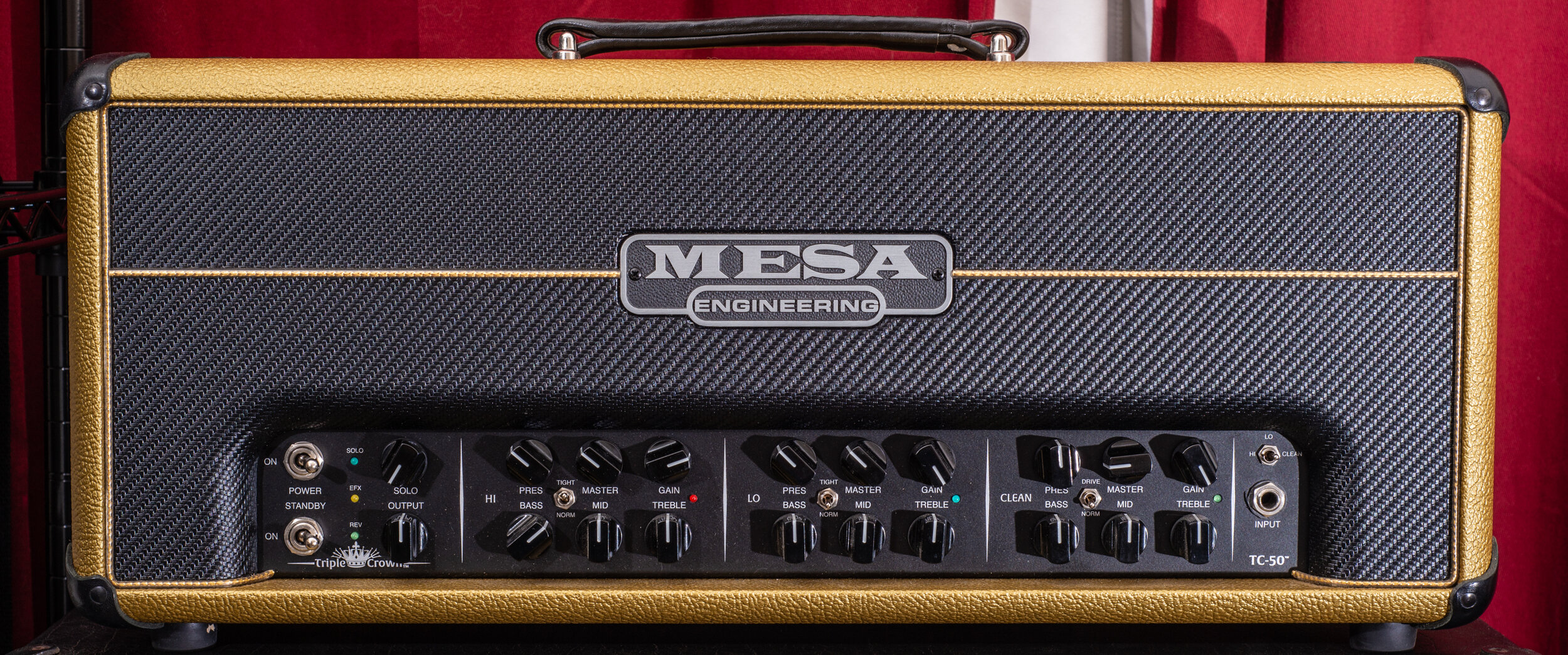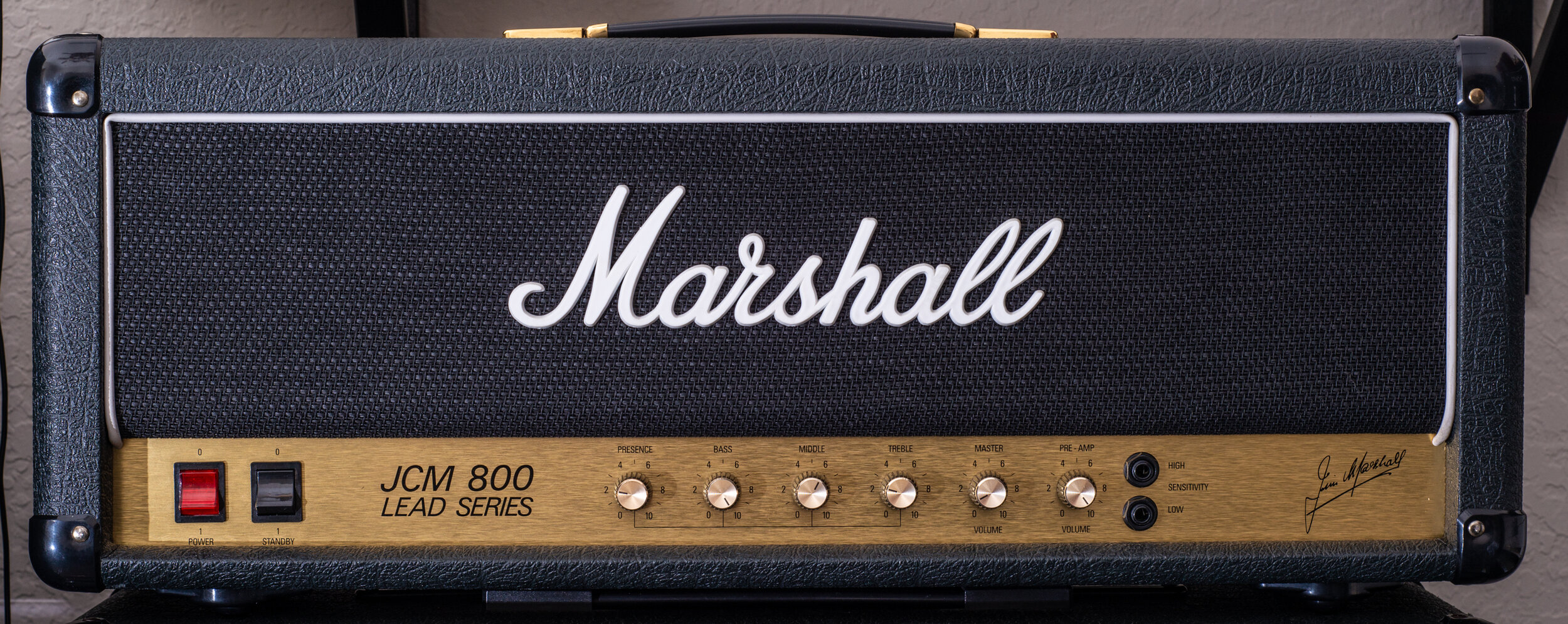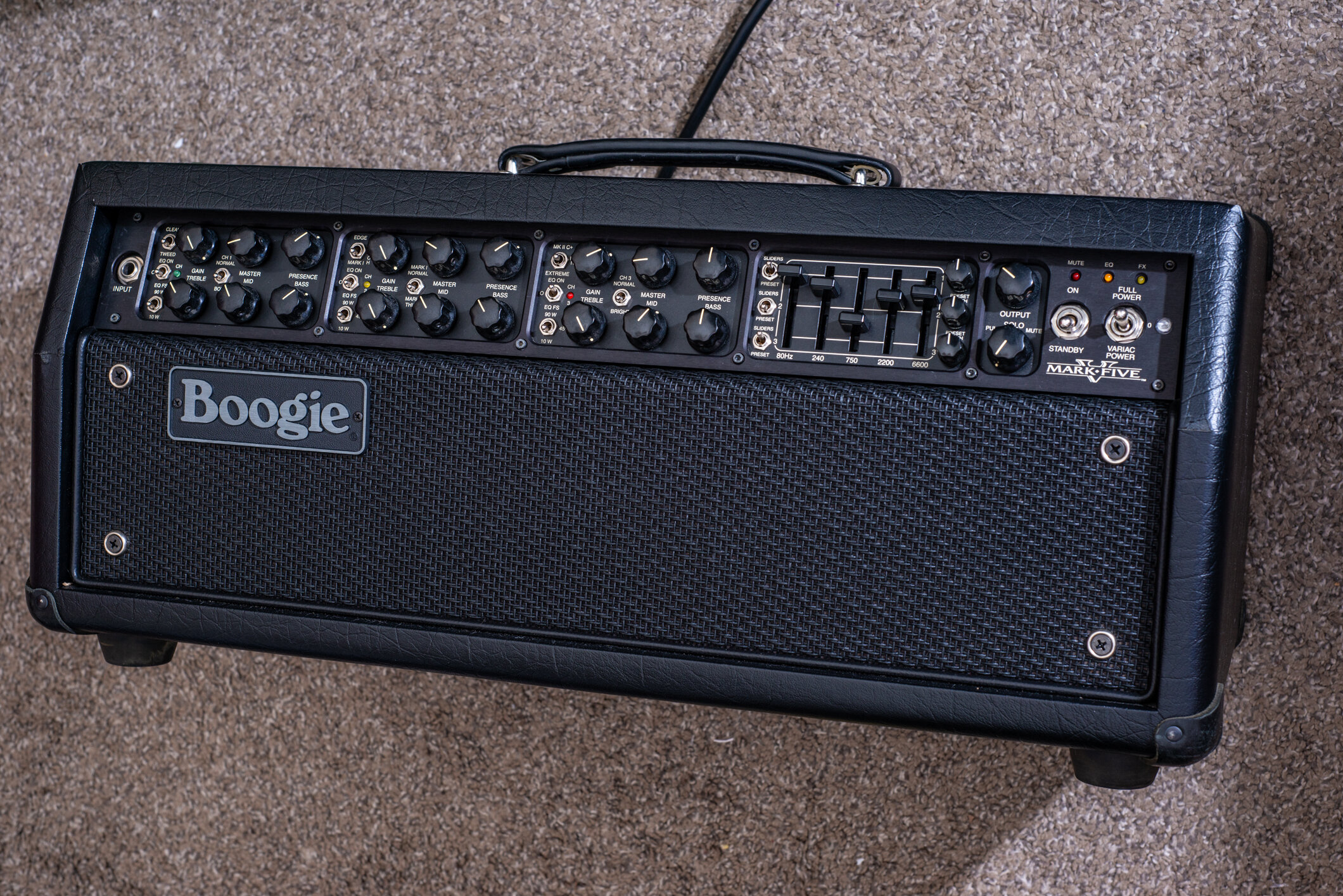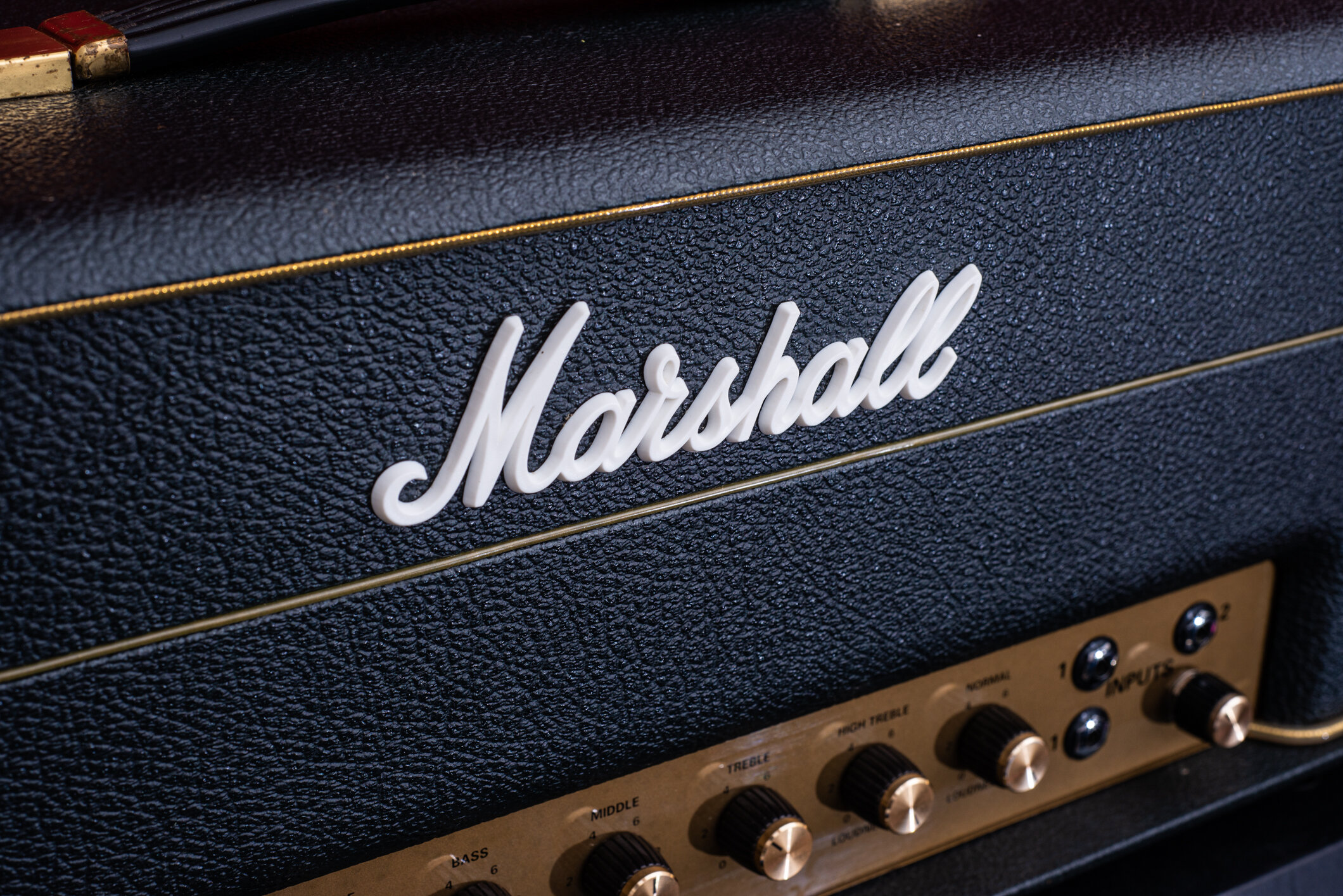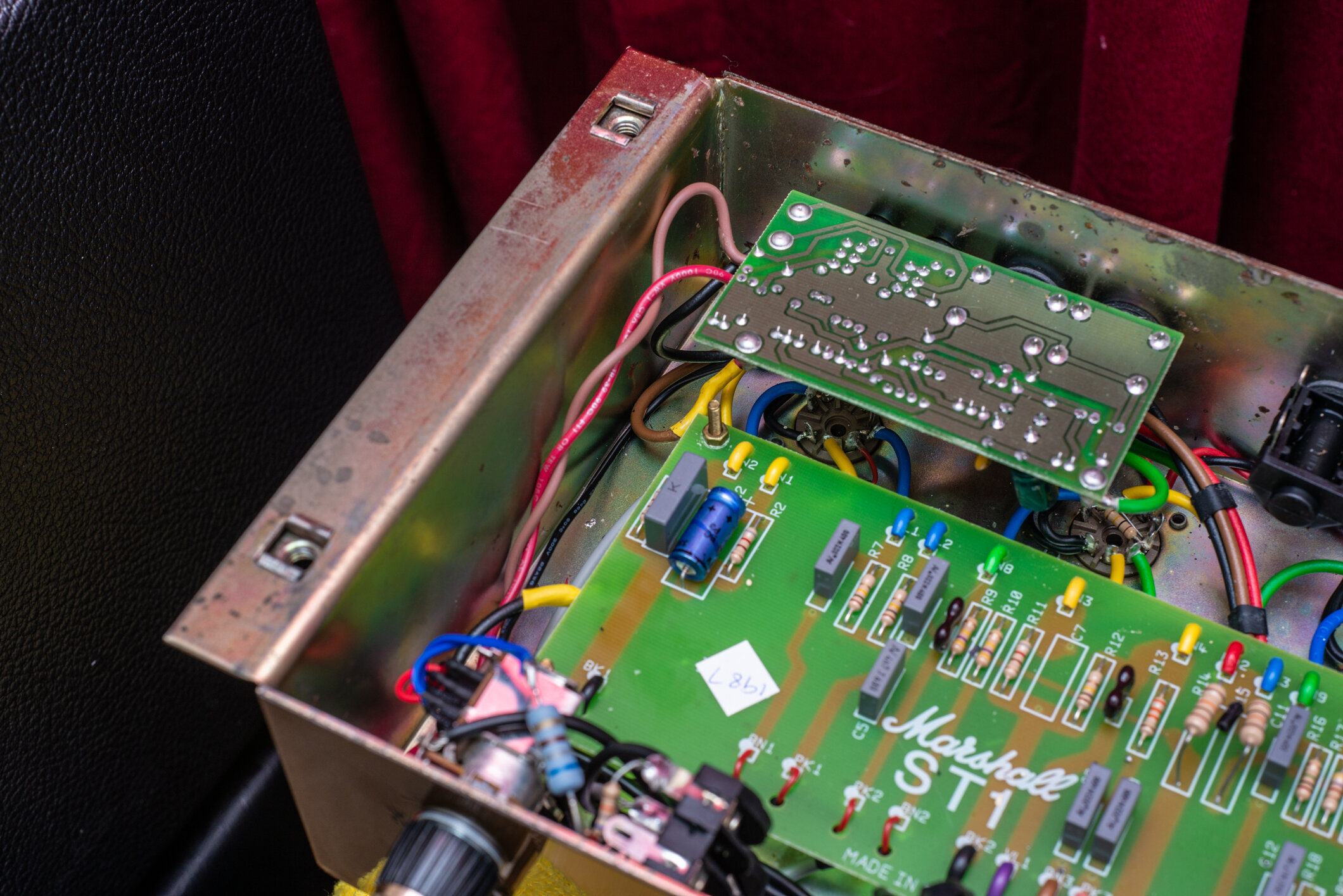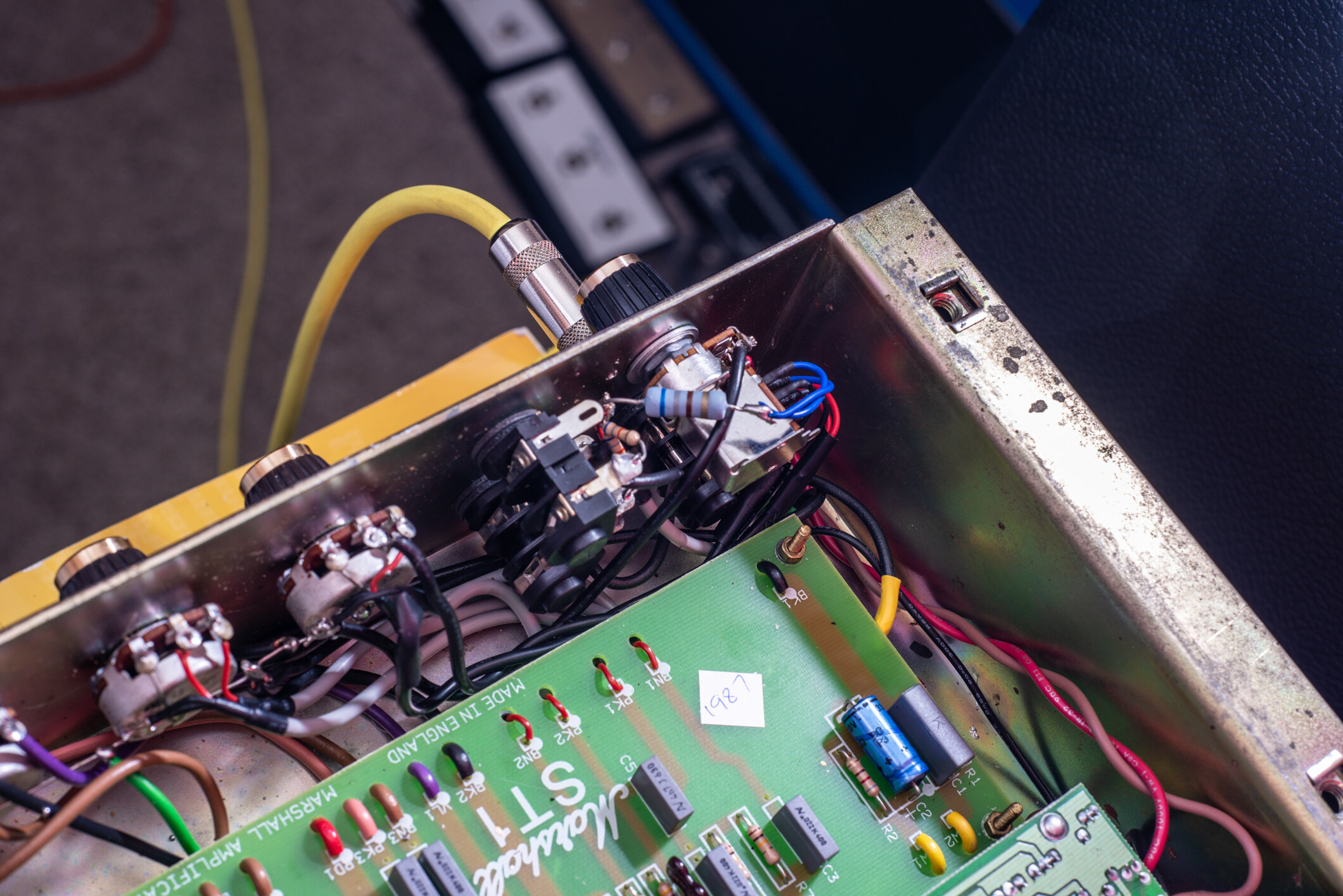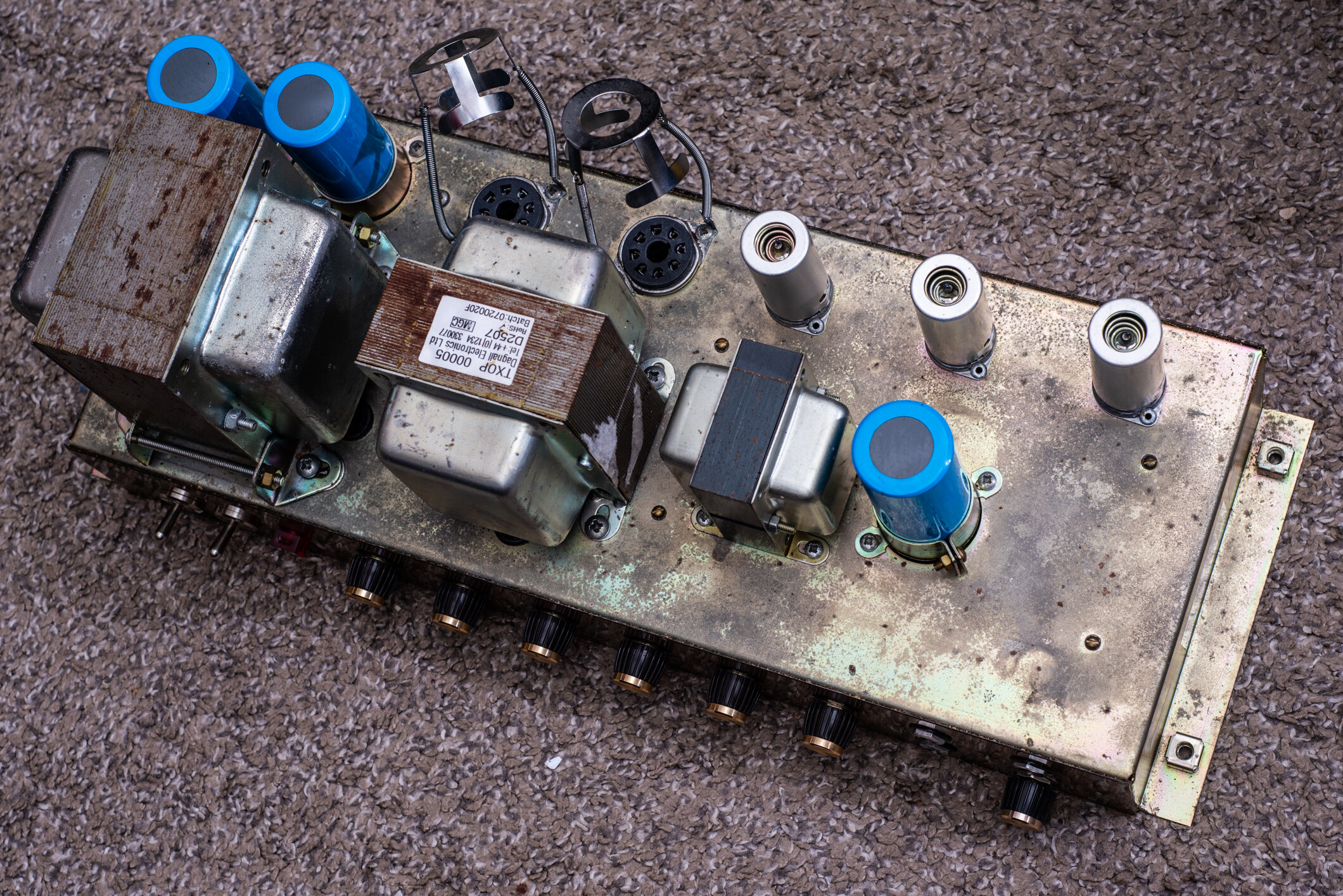I’ve been occasionally looking for good deals on Mesa amps to add to my collection lately, and after acquiring a Mark V (and being thrilled by it) I started to look at some of other models in the range. I’m covered on Rectifiers, but I have little to no experience with the Electradyne, Royal Atlantic, and Triple Crown models. From what I understand, these share a similar architecture and design ideology.
After spotting a TC-50 on Guitar Center’s used listings for a very good price - and an interesting color I couldn’t quite place (it looked creme to me in the pictures), I snagged it.
Instead of creme or tan like I expected, it’s GOLD tolex! Combined with the carbon fiber front (both top and bottom) and gold piping, it’s quite the striking look. I’m pleased that it’s a bit of a darker gold, so its not too flashy or bright like “gold tolex” would lead you to believe.
I’ve already spent some time dialing it in and my first impressions are good, but not mind blowing. As with any amp, I think it’s important to spend some time with it, try different speakers and settings, as well as guitars, so anything I say below could change as I get more time with it. The spring reverb is fantastic though - no complaints there.
The drive channels sound a bit like a Mark series amp, especially with the “tight” switch turned on, but the EQ structure is different - more like dialing a Marshall amp. Set to the “normal” setting, it gets a little flubbier in the bass but also fuller - really akin to a rectifier style amp. The “tight” switch does not only affect the bass though, it adds some hair and midrange grit to the tone as well - it’s really more accurate to call it a “voicing” switch than anything else. The tone flows nicely from Channel 2 to 3, you can keep the same core tone and change EQ, gain, or volume and it still sounds like the same amp, which is a plus. The Mark V can be a bit of a “3 amps in one box” whereas the TC50 is definitely just “one amp with 3 gain levels.”
The Cleans and “drive” mode on the clean channel are superb right off the bat - it’s the drive channels that will take a little more time to get along with. With the presence dialed back, or alternatively the treble down and presence up, it is easy to dial a great classic rock crunch on this channel, or a full sounding dirty clean.
